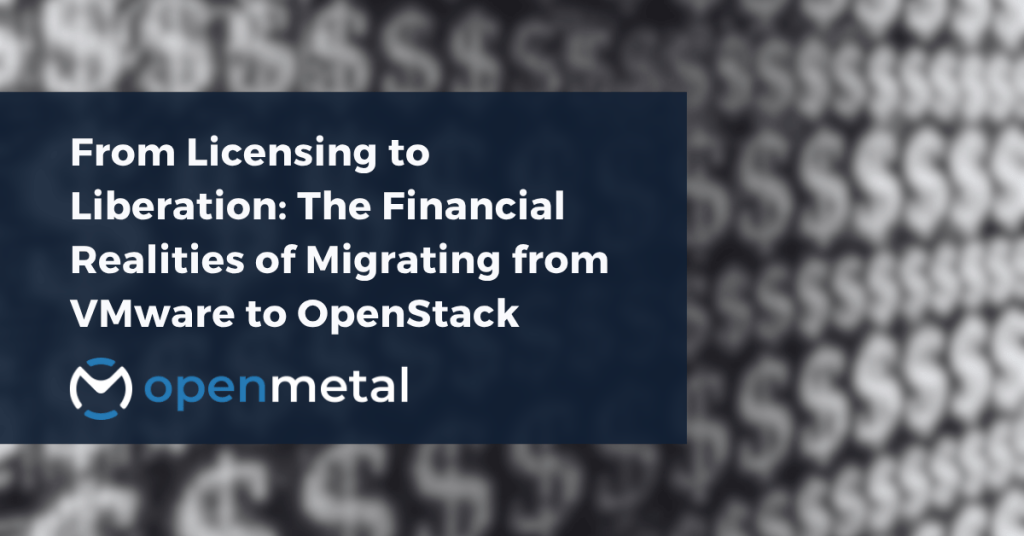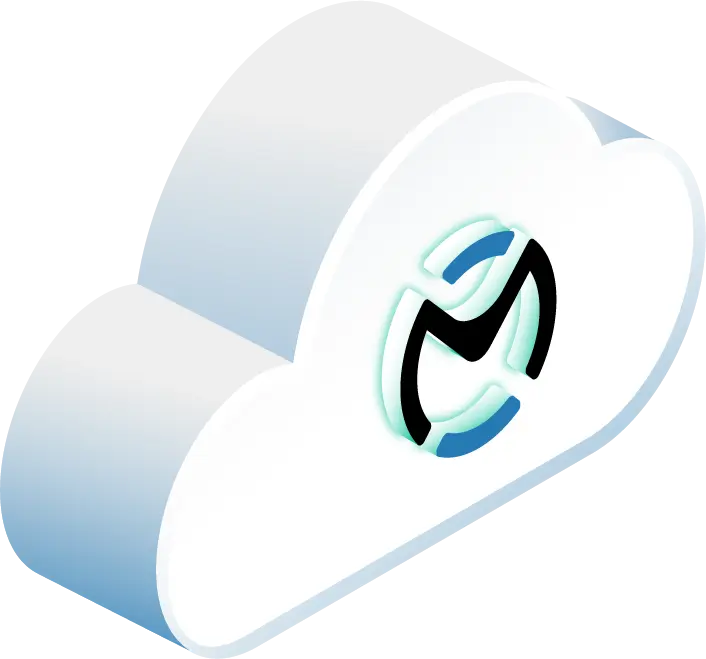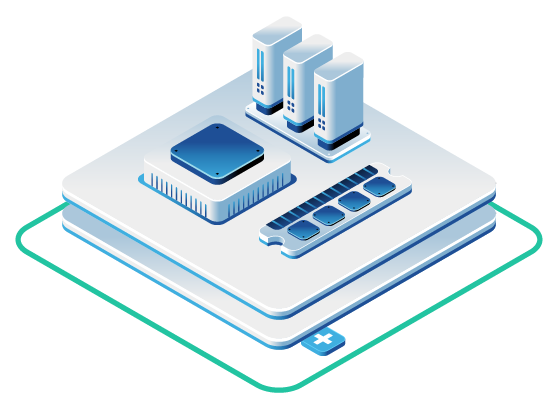
Ready to Explore Your VMware Exit Strategy?
The OpenMetal team is standing by to assist you with scoping out a fixed-cost model based infrastructure plan to fit your requirements, budgets, and migration timelines.
VMware customers face licensing costs that have increased 2-3x under Broadcom’s new subscription model, prompting a strategic reassessment. Organizations migrating to OpenStack-based infrastructure through providers like OpenMetal are discovering dual liberation—financial independence through predictable pricing and strategic freedom to innovate without proprietary constraints. The three-to-five-year total cost of ownership analysis increasingly favors open-source alternatives, making this transition both a defensive response to licensing pressures and an offensive strategy toward building resilient, future-ready infrastructure.
The enterprise infrastructure landscape is experiencing a seismic shift. VMware customers worldwide are opening renewal notices that reveal costs dramatically higher than previous years—sometimes double or triple their prior spending. This isn’t a temporary pricing adjustment; it represents a fundamental transformation in how virtualization infrastructure is licensed, sold, and controlled.
For CIOs and CFOs navigating quarterly budgets and five-year IT roadmaps, the question has evolved from “Should we migrate from VMware?” to “When and how do we execute our exit strategy?” The conversation has moved beyond cost containment to strategic positioning—because the financial pain of staying locked into escalating licensing fees now exceeds the transitional costs of migration.
The VMware Licensing Bind: More Than Numbers on a Contract
Following Broadcom’s acquisition of VMware in December 2023, the virtualization giant restructured its entire portfolio and pricing model. The changes weren’t subtle tweaks—they represented a wholesale reimagining of how customers access virtualization technology.
The core shifts included eliminating perpetual licenses in favor of subscription-only pricing, consolidating 168 products into four main bundles, and transitioning from socket-based to core-based licensing metrics (Opscompass). For many organizations, these changes translated to immediate cost increases. Industry analysts reported that customers facing renewals post-acquisition experienced cost increases of 2-3x their previous spending, with Gartner noting that feedback from customers has been largely negative regarding these substantial price increases.
But the financial impact goes beyond the sticker price. The new licensing structure introduces several hidden costs:
Audit Exposure and Compliance Risk: Broadcom implemented a 20% penalty for late renewals and expects to conduct more frequent audits under the subscription model. Organizations must now continuously monitor their actual usage against licensed limits to avoid overage charges, creating ongoing operational overhead.
Bundle Bloat: The consolidated product bundles force customers to pay for features they don’t use. VMware Cloud Foundation now includes vSAN, NSX, and Aria management components whether you need them or not. If your infrastructure strategy doesn’t require these components, you’re subsidizing capabilities that deliver zero value to your organization.
Strategic Inflexibility: Perhaps the most insidious cost isn’t measured in dollars—it’s measured in lost agility. When your infrastructure budget becomes unpredictable year over year, strategic planning becomes reactive rather than proactive. Innovation projects get shelved because you can’t forecast what your virtualization platform will cost in 18 months.
Migration as Financial Strategy: Understanding the True Economics
When CFOs model the VMware exit decision, they’re not comparing current-state costs against future-state costs. They’re comparing two dynamic trajectories: the escalating path of VMware licensing versus the transitional costs and long-term savings of migration.
The upfront costs of migration are real and shouldn’t be minimized:
Capital and Transition Expenses:
- Migration and Implementation Services: Organizations can work with OpenMetal’s third-party migration specialist partners or engage their own consulting partners. Costs vary based on environment complexity, workload dependencies, and timeline requirements.
- Training and Skill Development: Budget per engineer for OpenStack training and certification
- Hybrid Operation Period: Plan for 6-18 months running parallel environments during staged migration, creating temporary operational overhead
- Potential Downtime Contingency: While properly planned migrations minimize disruption, build contingency budgets for extended maintenance windows or rollback scenarios
However, 451 Research analysis found that managed private cloud service providers gain benefits of scale by spreading automation costs across multiple deployments, making their total cost of ownership competitive with public cloud infrastructure. The key insight: migration costs are one-time expenses, while VMware licensing costs compound annually with unpredictable increases.
Aligning Migration with Financial Reality:
One of the most challenging aspects of VMware migration is the licensing calendar mismatch. Organizations deeply embedded in the VMware ecosystem often face multi-year enterprise agreements with renewal dates that don’t align with their desired migration timeline. The result? Potential “double-paying”—maintaining VMware licenses while simultaneously investing in new infrastructure.
OpenMetal addresses this challenge through graduated capacity pricing that allows organizations to grow their infrastructure at a pace that makes business sense. Rather than requiring full upfront commitment, this approach lets you slowly migrate workloads over time, paying proportionally as you scale. Ramp pricing can be customized to each business case, ensuring you only reach “full price” at the right tipping point—when the majority of your workloads have migrated and you’re ready to sunset VMware entirely.
This graduated approach transforms migration from a risky “all-in” bet into a measured transition that aligns infrastructure costs with actual workload migration progress.
Life After Licensing: OpenStack on OpenMetal Economics
OpenStack represents more than a technical alternative to VMware—it embodies a fundamentally different economic model. Instead of recurring licensing fees that escalate with each renewal cycle, OpenStack operates on open-source principles where the software itself is free. Your costs shift to infrastructure, management, and support—elements you can control, predict, and optimize.
OpenMetal exemplifies this alternative approach. Unlike VMware’s shared tenancy and restrictive service tiers, OpenMetal delivers fully dedicated clusters for each customer, guaranteeing performance consistency by eliminating noisy neighbor effects. Customers receive full administrative control, allowing them to configure, scale, and manage their environments with flexibility that VMware typically restricts to its highest-tier offerings.
Transparent, Predictable Pricing:
The OpenMetal pricing model eliminates hidden fees and provides transparent infrastructure costs, including fair 95th percentile bandwidth pricing. For organizations leaving VMware, this predictability transforms financial planning. Instead of anxiety over the next contract negotiation, you gain clarity that enables long-term planning with confidence.
No “VM Tax” or Licensing Restrictions:
One of the most significant economic advantages of migrating to OpenMetal is the complete absence of per-VM licensing fees. Unlike VMware, which charges based on the number of virtual machines you create, OpenMetal customers receive full root access to their hardware and can provision as many VMs as their infrastructure supports—without additional licensing costs.
This fundamental difference means:
- No artificial constraints on VM density: Slice and dice your hardware resources however your workloads demand
- No license true-ups or compliance audits: You own the capacity you purchase, period
- No penalties for consolidation efficiency: Getting more VMs per server saves you money instead of triggering license fees
- Freedom to experiment: Spin up development, testing, and staging environments without worrying about incremental licensing costs
For organizations running hundreds or thousands of VMs, this absence of per-VM fees represents substantial ongoing savings that compound year over year. You pay for the infrastructure capacity you need, then use it however you want—a straightforward economic model that aligns infrastructure costs with actual resource consumption rather than arbitrary licensing metrics.
Consider the total cost of ownership comparison over five years:
VMware Five-Year Trajectory (Illustrative Example):
These figures represent illustrative examples based on industry-reported trends. Multiple sources confirm Broadcom’s licensing changes resulted in 2-3x immediate cost increases for many customers. The baseline of $850,000 represents a medium enterprise deployment, with subsequent 10% annual increases modeling conservative ongoing renewal escalation. Actual VMware costs vary significantly based on enterprise agreement terms, negotiated discounts, and specific product bundles.
- Year 1: $850,000 (baseline licensing, support, professional services)
- Year 2: $935,000 (+10% renewal increase)
- Year 3: $1,028,500 (+10% renewal increase)
- Year 4: $1,131,350 (+10% renewal increase)
- Year 5: $1,244,485 (+10% renewal increase)
- Total: $5,189,335
OpenMetal Five-Year Trajectory:
Based on OpenMetal XL v4 Private Cloud Core configuration supporting approximately 500 VMs. Configuration includes base Cloud Core (3 XL v4 servers) plus 2 additional XL v4 servers, providing 493 VMs at 8:1 vCPU ratio and 1:1 vRAM ratio with 8GB RAM/4vCPU VM flavor. Pricing includes hardware and Assisted Management services.
- Hardware Configuration:
- Base Cloud Core + 2 additional XL v4 servers: $9,283.33/month
- Assisted Management: $688 (base) + $3,027.20 (2 servers) = $3,715.20/month
- Monthly Total: $12,998.53
- Year 1: $155,982 (infrastructure + assisted management)
- Year 2: $155,982 (same configuration)
- Year 3: $155,982 (same configuration)
- Year 4: $171,580 (added 1 XL v4 for growth to ~600 VMs)*
- Year 5: $171,580 (same configuration)
- Total: $811,106
*Year 4 expansion adds 1 XL v4 server ($3,421.07/mo hardware + $1,513.60/mo management = $4,934.67/mo additional = $59,216/year incremental)
Five-Year Comparison:
- VMware trajectory: $5,189,335
- OpenMetal trajectory: $811,106
- Savings: $4,378,229 (84%)
Important Notes:
- Migration/implementation costs not included in the OpenMetal calculation; these vary based on complexity and provider selection. OpenMetal partners with third-party migration specialists, or customers can engage their own consulting partners for implementation services.
- Bandwidth included: Each XL v4 includes 6 Gbps bandwidth allotment at no additional cost. The 5-server configuration provides 30 Gbps total bandwidth allowance. Additional bandwidth follows 95th percentile billing or can be purchased in 1 Gbps increments for $375/month.
- Upskilling the team over Year 1-2 would result in training costs that should be added to OpenMetal totals for complete TCO comparison.
The economics improve further when you factor in operational efficiencies. OpenMetal customers commonly discover that their environments become easier to manage over time as automation matures and teams gain proficiency with open-source tooling. The cultural shift toward open-source principles also creates secondary benefits—engineers skilled in OpenStack, Kubernetes, and cloud-native architectures command broader market opportunities than those locked into proprietary VMware ecosystems.
Strategic Liberation Beyond Dollars
The migration from VMware to OpenStack delivers financial benefits, but the strategic advantages may prove even more valuable over the long term.
Vendor Independence and Control:
When your infrastructure runs on open-source foundations, you’re no longer subject to unilateral vendor decisions about pricing, packaging, or product direction. The Open Infrastructure Foundation reports that VMware migrations and public cloud repatriations are set to drive a quadrupling of OpenStack deployments by 2029. This surge reflects enterprises reasserting control over their infrastructure destinies.
Freedom to Innovate:
Proprietary platforms create innovation bottlenecks. Want to experiment with new AI/ML frameworks? Integrate emerging DevOps toolchains? Deploy experimental Kubernetes configurations? Proprietary vendors gate these capabilities behind licensing tiers, roadmap priorities, and compatibility constraints.
OpenStack’s architecture embraces integration with broader open-source ecosystems. Organizations migrating to OpenMetal frequently discover that projects previously deemed too complex or expensive under VMware become straightforward. The infrastructure adapts to your innovation strategy rather than constraining it.
Future-Proofing Through Open Standards:
Market analysts estimate the OpenStack services market will grow from $22.81 billion in 2024 to $91.44 billion by 2029, representing a 32% compound annual growth rate. This isn’t speculative growth—it reflects enterprises voting with their infrastructure budgets for open, portable, and predictable platforms.
When you build on open standards rather than proprietary specifications, you’re positioning your organization to leverage whatever innovations emerge in the broader cloud ecosystem. Your infrastructure becomes a platform for transformation rather than a constraint to be worked around.
OpenMetal’s Unique Perspective: Financial Liberation as Innovation Enabler
OpenMetal believes the current moment represents more than a cost-cutting exercise—it’s a turning point in enterprise infrastructure philosophy. While VMware customers are being squeezed by licensing changes and vendor consolidation, organizations migrating to OpenStack through providers like OpenMetal are experiencing dual liberation: financial independence and strategic freedom.
Predictable pricing isn’t merely an accounting convenience; it’s a structural enabler of innovation. When CIOs and CFOs can trust that their infrastructure costs won’t swing wildly year to year, they redirect energy and resources toward transformation projects rather than budget firefighting. OpenMetal’s open-source foundation ensures that enterprises are not only protected from licensing volatility but positioned to leverage the broader ecosystem of open innovation.
This viewpoint reframes migration not as a defensive move against VMware’s changes but as an offensive strategy toward building resilient, future-ready infrastructure. OpenMetal’s combination of open-source technology, dedicated clusters, and transparent pricing creates an infrastructure platform designed for both today’s financial discipline and tomorrow’s innovation opportunities.
Organizations that have completed this migration often describe a cultural shift alongside the technical transformation. Teams freed from proprietary barriers embrace experimentation, contribute to open-source communities, and develop skills that transcend any single vendor ecosystem. The infrastructure becomes a competitive advantage rather than a necessary cost center.
Practical Advice and Risk Mitigation
No migration is without risk, but understanding common pitfalls allows you to navigate them successfully.
Budget Appropriately for the Full Transition:
- Phase 1 (Months 1-3): Assessment, architecture design, proof-of-concept
- Phase 2 (Months 4-9): Migration execution, parallel operations
- Phase 3 (Months 10-18): Optimization, training completion, VMware decommission
Migration complexity and costs vary significantly based on workload dependencies, data volumes, and custom integrations. OpenMetal partners with third-party migration specialists who can provide detailed assessments, or organizations can engage their preferred consulting partners for implementation services. Build contingency of 15-20% above initial estimates for unexpected complexity or extended parallel operations.
Avoid Common Migration Mistakes:
Don’t attempt “big bang” migrations. Gartner estimates that migrating from medium or large VMware environments will take 1.5 to four years, requiring careful planning to ensure replacements can deliver necessary performance for mission-critical applications. Stage your migration by workload criticality and complexity, proving the new platform with non-critical applications before migrating crown-jewel systems.
Don’t underestimate the skills gap. OpenStack operates differently than VMware, and your teams need time to develop proficiency. Invest in training early, engage consultants for knowledge transfer, and accept that productivity may dip temporarily during the learning curve.
Don’t ignore networking complexity. Industry analysts note that networking components like NSX can be among the stickiest parts of the VMware stack. Plan your network architecture carefully and consider whether hybrid networking approaches might ease the transition.
De-Risk Through Hybrid Approaches:
Most successful migrations don’t flip a switch—they follow hybrid paths that allow validation at each stage. Keep VMware running for your most critical workloads while you prove OpenStack with secondary systems. This approach increases transition costs but dramatically reduces business risk.
Work with experienced partners. Providers like OpenMetal bring battle-tested migration methodologies, architectural expertise, and access to third-party migration specialists that compress timelines and avoid costly mistakes. Whether you engage OpenMetal’s partner network or bring your own consulting team, experienced guidance pays for itself through faster time-to-value and fewer missteps.
Conclusion: The Dual Liberation
The movement from VMware to OpenStack represents both financial and strategic liberation. Financially, organizations achieve predictable costs and lower total cost of ownership over three-to-five-year horizons. The immediate pain of migration expenses is offset by elimination of escalating licensing fees and regained budget predictability.
Strategically, the migration delivers something more valuable than cost savings: control over your infrastructure destiny. You’re no longer subject to unilateral vendor decisions about pricing, packaging, or product direction. Your teams gain freedom to innovate without proprietary constraints, integrate with emerging open-source ecosystems, and position your organization to leverage whatever cloud innovations emerge next.
This VMware-to-OpenStack shift is part of a larger movement toward open, predictable, and sovereign infrastructure. Recent surveys indicate that 86% of CIOs plan to move some public cloud workloads back to private cloud or on-premises—the highest on record. Organizations are reasserting control over their technology stacks, rejecting models where vendors hold unilateral pricing power and strategic leverage.
The question facing your organization isn’t whether to consider alternatives to VMware—the licensing economics have already made that decision. The question is how quickly you can execute a migration strategy that positions you for both immediate financial relief and long-term strategic advantage. For many enterprises, providers like OpenMetal represent the path forward: open-source foundations, transparent economics, and infrastructure that adapts to your business rather than constraining it.
The financial realities are clear. The strategic imperative is compelling. The only remaining question is: when does your migration begin?
OpenMetal’s team can help you model the financial impact of migration for your environment—including customized TCO analysis, graduated capacity pricing options aligned with your VMware renewal dates, and realistic migration timelines.
Read More Blog Posts
Works Cited
- “Cloud Repatriation on the Rise.” EE Times Europe, 17 Dec. 2024, www.eetimes.eu/cloud-repatriation-on-the-rise-83-of-cios-plan-workload-shifts-in-2024/.
- “Gartner: VMware Users Face Multi-Hypervisor Future.” Computer Weekly, www.computerweekly.com/news/366624854/Gartner-VMware-users-face-multi-hypervisor-future. Accessed 3 Oct. 2025.
- “OpenInfra Marks 15 Years of OpenStack as Adoption Surges and Epoxy Release Lands.” HPCwire, 2 Apr. 2025, www.hpcwire.com/off-the-wire/openinfra-marks-15-years-of-openstack-as-adoption-surges-and-epoxy-release-lands/.
- “Overcoming VMware Licensing Challenges in 2025.” Opscompass, 11 Aug. 2025, opscompass.com/vmware-licensing-challenges-2025/.
- Rogers, Owen, and Jean Atelsek. “451 Research Benchmarks Public and Private Infrastructure Cost.” Canonical, 13 June 2018, canonical.com/blog/451-research-benchmarks-public-and-private-infrastructure-cost.
- “Will VMware’s Licensing Changes Push Devirtualization of Data Centers?” CIO, 30 May 2025, www.cio.com/article/2513749/will-vmwares-licensing-changes-push-devirtualization-of-data-centers.html.


































